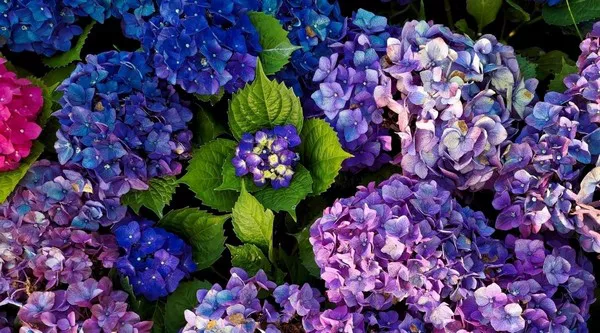Hydrangeas are beloved for their lush, voluminous blooms and vibrant colors, making them a popular choice for floral arrangements. Whether you’ve received a bouquet as a gift or you’ve cut them from your garden, learning how to preserve cut hydrangea flowers can extend their beauty and grace your home for an extended period. In this comprehensive guide, we will explore the art of preserving cut hydrangeas, including choosing the right blooms, cutting techniques, water and vase care, and advanced preservation methods.
Choosing the Perfect Blooms
1. Variety Matters
Not all hydrangeas are created equal when it comes to cut flowers. Certain varieties are better suited for preserving than others. Hydrangea macrophylla, often known as mophead or lacecap hydrangeas, are popular choices due to their large, showy blooms and robust stems. Other varieties, like the oakleaf hydrangea (Hydrangea quercifolia) and paniculata hydrangea (Hydrangea paniculata), also make excellent cut flowers.
2. Timing Is Everything
When selecting hydrangea blooms for cutting, timing is crucial. Aim to cut them in the morning or late afternoon when the weather is cooler, and the plant is well-hydrated. Avoid cutting during the heat of the day, as this can stress the plant and reduce the vase life of the flowers.
Cutting Techniques
1. The Right Tools
To preserve cut hydrangea flowers successfully, you’ll need the right tools. Use sharp, clean garden shears or pruners to make clean cuts. Dull blades can crush the stem, hindering water uptake and shortening the vase life.
2. Choose the Right Stage
Select blooms that are just beginning to show color but haven’t fully opened yet. These flowers are often at their peak freshness and will last longer in a vase. Avoid blooms that are fully open or beginning to wilt.
3. Cut at an Angle
When cutting hydrangea stems, make a clean, diagonal cut. This exposes more surface area for water absorption and prevents the cut end from sitting flat at the bottom of the vase, which can impede water uptake.
4. Remove Excess Foliage
Strip any leaves or foliage that would be submerged in water when you arrange the hydrangeas in a vase. This prevents bacterial growth and keeps the water clean.
Water and Vase Care
1. Use Warm Water
Once you’ve cut your hydrangeas, immediately place the stems in a container filled with warm water. Warm water is more easily absorbed by the cut stems and helps to prevent air bubbles from forming in the stem, which can block water uptake.
2. Recut Stems
If your hydrangeas have been out of water for an extended period, it’s a good idea to recut the stems underwater before arranging them in a vase. This ensures that no air bubbles are trapped in the stem, which can impede water flow.
3. Change the Water Regularly
Hydrangeas are particularly sensitive to bacterial growth in the vase water, which can clog their stems. Change the water every two days or whenever it starts to look cloudy. Additionally, recut the stems by an inch or so each time you change the water to maintain optimal water absorption.
4. Add Floral Preservatives
Floral preservatives can extend the life of your cut hydrangea flowers. These products contain nutrients and antibacterial agents that keep the water clean and provide essential nutrients to the blooms. Follow the manufacturer’s instructions for the correct dosage.
5. Avoid Direct Sunlight and Heat
Place your vase of hydrangeas in a cool, shaded area away from direct sunlight, heating vents, or radiators. Heat can cause the flowers to wilt prematurely, while direct sunlight can accelerate their color fading.
Advanced Preservation Methods
1. Drying Hydrangeas
If you’d like to preserve your hydrangea blooms indefinitely, drying them is a popular option. To do this, cut the stems at their peak and remove any foliage. Hang the blooms upside down in a dark, dry location with good air circulation. In a few weeks, your hydrangeas will be completely dried and ready for arrangements.
2. Pressing Hydrangeas
Another method of preservation is pressing hydrangeas. Place blooms between sheets of blotting paper or newspaper and press them within the pages of a heavy book. This method is ideal for creating framed floral art or adding pressed hydrangeas to homemade cards and crafts.
Common Mistakes to Avoid
1. Overwatering
While it’s crucial to keep hydrangeas well-hydrated, overwatering can lead to stem rot and decay. Ensure the vase has proper drainage, and change the water regularly to maintain a clean environment.
2. Underestimating the Importance of Timing
Timing is key when cutting hydrangeas. Picking them at the right stage of development ensures they last longer in your vase.
3. Ignoring Cleanliness
Cleanliness is vital to preventing bacterial growth in the vase water. Trim the stems, remove excess foliage, and change the water to keep your hydrangeas fresh.
4. Using Cold Water
Avoid using cold tap water for hydrangeas, as it can shock the stems and reduce their water absorption capacity.
Conclusion
With the proper care and attention, cut hydrangea flowers can bring joy and beauty to your home for an extended period. By selecting the right blooms, using the correct cutting techniques, and providing optimal water and vase care, you can maximize their vase life. Additionally, advanced preservation methods like drying and pressing offer creative ways to cherish the beauty of hydrangeas long after they have left the garden. So, whether you’ve received a bouquet or you’re cultivating these stunning flowers in your garden, follow these tips and techniques to preserve the allure of hydrangeas in your home.


